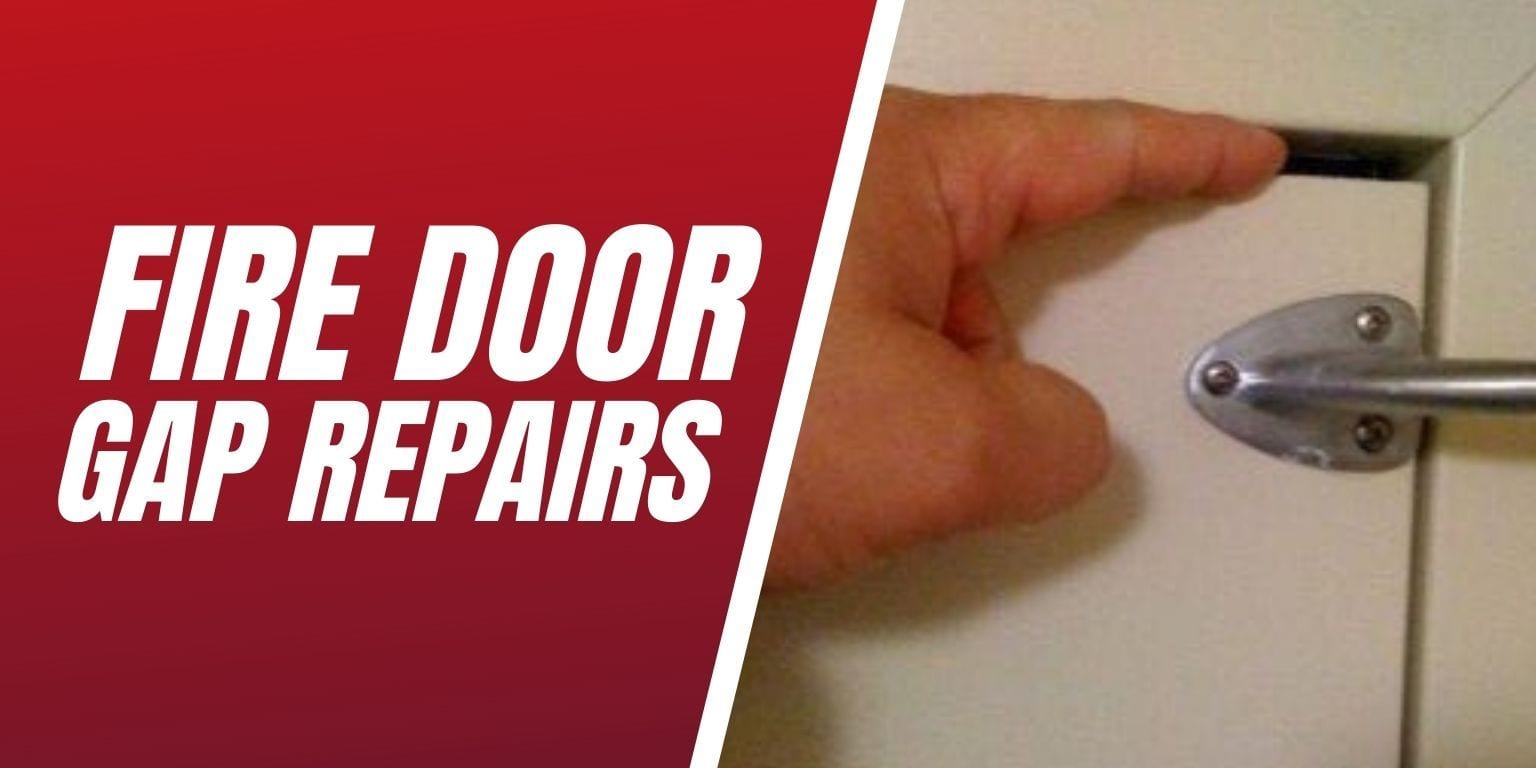
2020 is officially over, and what a tough year it has been for many people, especially those who may have lost someone special. But even just trying to prevent the spread of this nasty virus by socially distancing has been a challenge this year. However, the virus isn’t the only toxin you want to keep from spreading. As fire and life safety professionals, we are constantly talking about the importance of maintaining you facility’s fire and life safety systems in order to prevent the spread of fire and smoke. One quick and easy inspection that should be regularly performed is verifying that the fire door gap repairs meet NFPA requirements. Fire doors have become an important part of a building’s fire and life safety protection systems. However, through daily use, mistreatment, or even incorrect installation, these door gaps can be too large and non-compliant, putting building occupants at unnecessary risk. These gaps seem like a trivial issue on the surface, but during a fire they actually play a very important role.
According to Door Security and Safety Foundation, one of the top deficiencies found in fire door inspections is “poor clearance dimensions around the perimeter of the door in the closed position”. Too often gaps around the perimeter of a fire door will be greater than the gap allowances for fire doors acceptable by NFPA 80.
Fire uses oxygen to burn, and a large fire in a closed room with begin to consume all the oxygen in that area, creating a vacuum of negative pressure near the base of the fire. The heat from the burning materials creates intense positive pressure near the ceiling of the room. This is where the passive fire protection, including fire door gaps, becomes important. With properly sealed and fire resistant gaps, the fire will not have a constant supply of fresh oxygen to burn, and will burn smaller or even die out on its own.
If the gaps are too big, the negative pressure will cause fresh oxygen to be sucked into the room with the fire, feeding it and allowing it to grow bigger and hotter. This will also make the positive pressure stronger, forcing the hot air and smoke out of the higher fire door gaps and into areas that are supposed to be safe from the fire. This hot air and smoke can actually be able to ignite combustibles, creating a fire on both sides of the closed door. So, then what are the fire door gap repairs acceptable for doors so that fire and smoke will not be able to pass through?
Swinging Doors with Builders Hardware
Fire Door Gap Repairs for Doors made of Wood:
- Clearance for under the bottom of the door maximum is 3/4”
- Clearance between door and frame is 1/8”
- Clearance for meeting edges for a pair of doors is 1/8”
Fire Door Gap Repairs for Doors made of Steel:
- Clearance for under the bottom of the door maximum is 3/4”
- Clearance between door and frame is 1/8”, +/- 1/16”
- Clearance for meeting edges for a pair of doors is 1/8”, +/- 1/16”
Vertically Sliding Fire Doors
- Clearance between the door and the wall when the door is closed is 3/8 in.
Fire doors are also required to have an active latch built in to the hardware, just to prevent them from being pushed open by the positive pressure created by the fire and the expanding gases created by it. This a change to fire door code, which used to only focus on the negative pressure and keeping oxygen from being able to feed the fire.
Fire door gap repairs may seem like a small issue to take care of, but even small issues could cause a lot of harm and damage if not taken care of properly. It’s important for the clearance around the perimeter of the fire door to be within the appropriate limits to help prevent the spread of fire and smoke. However, if a fire door does have a gap larger than what is acceptable by NFPA, then a fire rated seal will be used to help close the gap. Gaps can be sealed with an intumescent strip that when exposed to heat will expand, a neoprene weathering strip, or gaskets to help prevent the passage of smoke.

